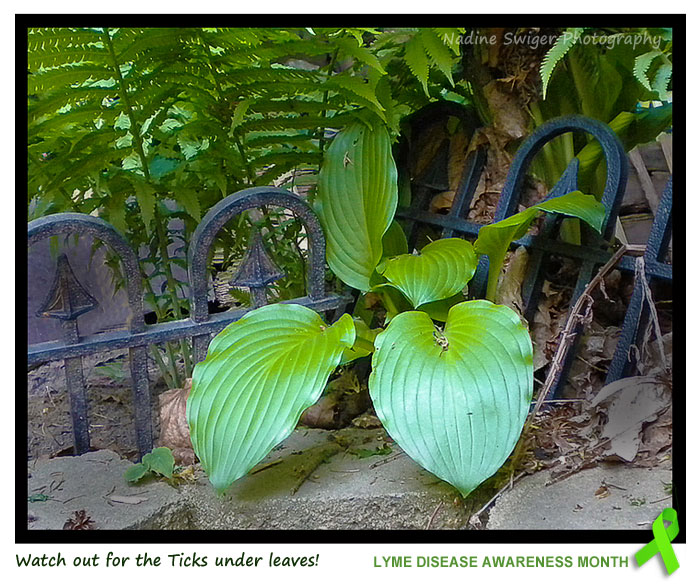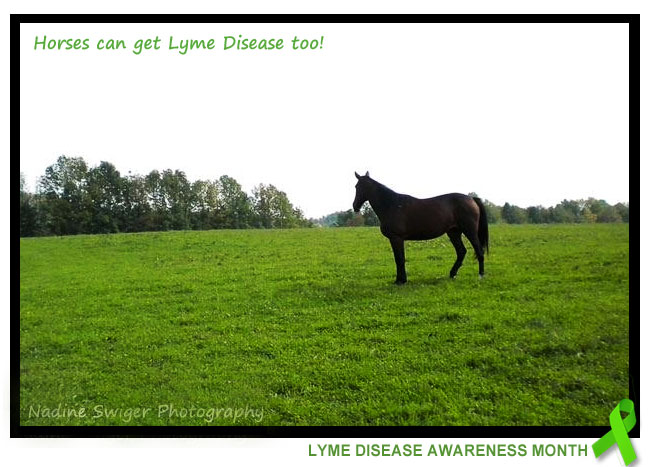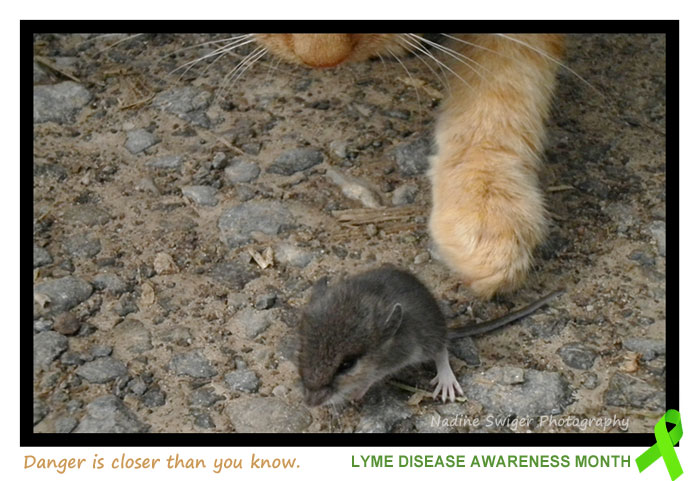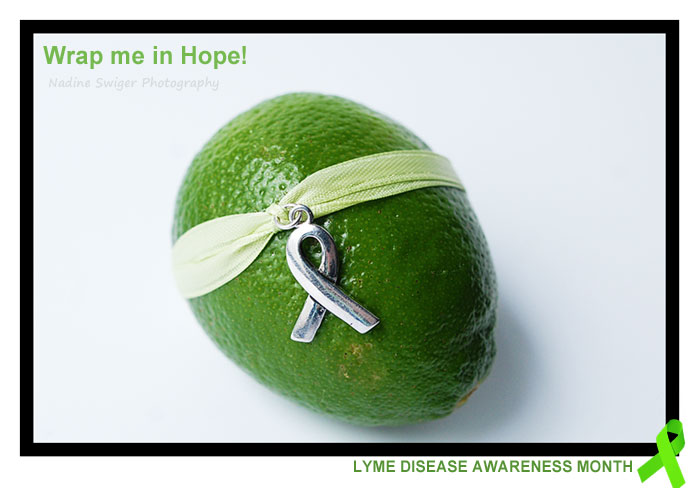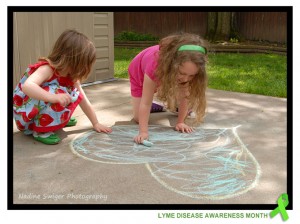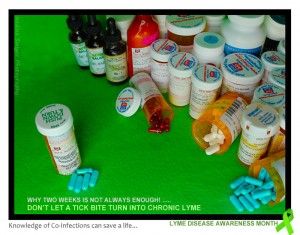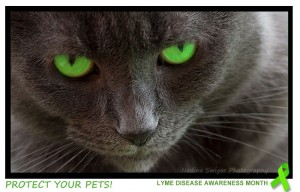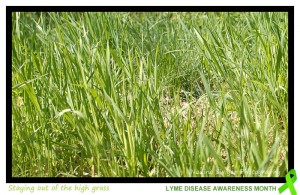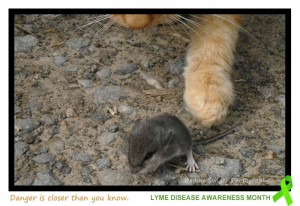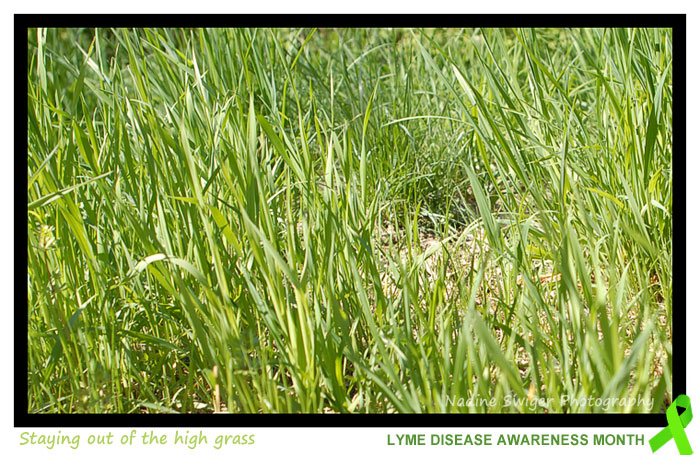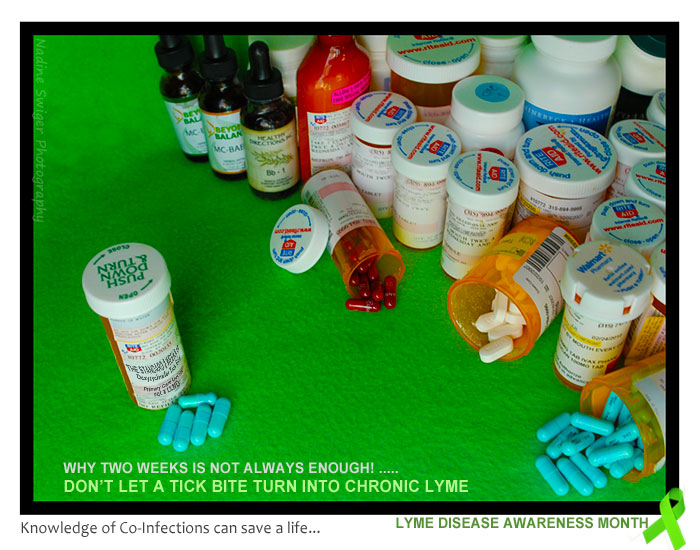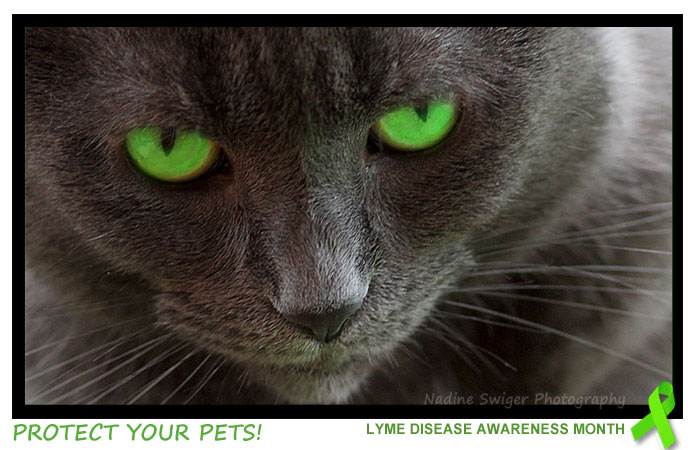Leaves and Ticks..LD Awareness Photos
Day 13 : Lyme Disease Awareness Photos
MYTH: Ticks are only in high grass or in the woods. | This statement is FALSE!
_________________________________________________________________________________________
With Spring finally here, people are getting outside to starting to their yard work as they prepare for those Memorial Day Weekend cook-outs. What you may not know as your are picking up those left over fall leaves is that ticks could be living under them.
Did you know that a Lyme infested tick could be as small as a poppy seed? Take percaution when you are doing your yard a work. Wear long pants, light color shoes and sock (to see if you have a tick crawling on you easier), gloves and of course do tick checks when your done. Even if you have never seen a tick on your property, mice, chipmunks, squirrels, birds, rabbits and other small animals could of bring ticks into your yard.
More than half of the people with Lyme Disease never even knew they were bit. Even fewer have the traditional bulls-eye rash that is associated with Lyme. It only takes a few extra minutes to protect yourself.
Raw Milk Treatments… LD Awareness Photos
Day 12 : Lyme Disease Awareness Photos

Alternative Medicine Treatment : Finding natural ways to heal your body…
_________________________________________________________________________________________
Hopefully you will never find yourself battling Lyme Disease especially in it’s chronic state. But if you ever do or currently are, have you heard about the Raw Pastured Milk treatment? It’s based on the early 1900’s practice of Dr. J. R. Crewe, of the Mayo Foundation (Rochester Minnesota), called “The Milk Cure.” Today, there is alot of buzz as people talking about the detoxing Milk fast, and results against Lyme Disease.
Of course there are risk to drinking raw milk, but if processed in a sanitary method (as most farms do) raw milk enthusiast say there should be no problem. I’ve known several family that own dairy farms, who all drink raw milk from their own animals. I have never recall any of them getting sick from their milk.
However, there is always risk to whatever method you use to treat an illness, natural or modern medicines. There are several drugs that Lyme Disease patient were treated with that later has come out to cause serious health issues. For an example, Levaquin has been known to cause tendentious and other issues like tendon ruptures. Several other drugs are harsh on the liver and can cause a whole other set of health issues like ruptured spleens.
I personally have not spoken to anyone who has tried the Raw Milk Cure, but it’s very fascinating information and think that it would be worth looking into. For more information about how Raw Milk Heals, visit The Bovine
Lyme Disease in Horses… LD Awareness Photos
Day 11 : Lyme Disease Awareness Photos
MYTH: Horses aren’t effected by Lyme Disease as humans and dogs are. | This statement is FALSE!
_________________________________________________________________________________________
Nearly 75% of the horses, living in areas where ticks and Lyme Disease are high, have tested positive for Lyme antibodies in their blood. It’s unknown as to how many of those horses are living with debilitating signs of Lyme Disease. As more and more horses are showing the obvious symptoms of Lyme, it’s no doubt that Lyme Disease in horses is a real issue. Reports are now showing that Chronic Lyme Disease is also present in horses as well.
Some of the Symptoms to look for in your Horse:
• Fever (most likely during early infections)
• Shifting lameness not explained by injury or over work
• Poor performance
• Personality changes
• Laminitis
• Anterior uveitis (ERU/moonblindness-like eye changes).
For more information about Lyme Disease in Horses, visit the following links:
Lyme in horses: http://www.equisearch.com/uncategorized/lyme-disease-horses-requires-health-treatment/
Chronic Lyme in Horses: http://harmanyequine.com/2010/12/chronic-lyme-disease-in-the-horse/
Catnip and Ticks… LD Awareness Photos
Day 10 : Lyme Disease Awareness Photos
Did you know that Catnip Oil can be used to repel ticks?
_________________________________________________________________________________________
Catnip not only drives cats wild, but catnip oil is a natural safe insect and tick repellent. Catnip has a substance called nepetalactone, which is the ingredient that makes cats go berserk. That same substance is also the ingredient that repels insects. If you look at the natural bug repellents on the market, you will see it as a key ingredient. I’m sure you have heard of the popular BUGz Be Gone which uses netpetalactone, and claims to repel ticks, chiggers, gnats and blackflies.
Besides Catnip Oil, some other natural repellents are eucalyptus oil, citronella oil, rosemary oil, cedar, geranium, lemongrass oil, or peppermint oil.
You can make your own Catnip Oil or purchase a bottle. Just be aware, putting straight essential oil on your skin is very dangerous and should be mix into other ingredient. Straight catnip Oil can be toxic. Also, Catnip Oil is extremely dangerous for cats, so never put Catnip Oil directly on your kitty’s skin. For more information about how to use catnip Oil, visit: http://www.essential7.com/essentialoils/catnip.html (information is at towards the bottom of the page).
Closer than you Know… LD Awareness Photos
Day 9 : Lyme Disease Awareness Photos
MYTH: Lyme disease is a rare disease. | This statement is FALSE! Lyme Disease is more common than you know.
_________________________________________________________________________________________
The Centers for Disease Control says more than 20,000 people get Lyme Disease every year, and the numbers keep rising! It’s very common for people to be misdiagnosed; the common misdiagnoses are Chronic fatigue syndrome, Lupus, Fibromyalgia, Amyotrophic lateral sclerosis (ALS), and even Multiple sclerosis. While others receive no diagnosis as all and are told it’s all in their head. The subjects of the documentary “Under Our Skin” have been incorrectly diagnosed with the above diagnoses, before they discover that it actually was the bacteria that causes Lyme disease was the culprit. You can see the trailor of the movie below or read the article on abc news.
Don’t let this happen to you. Protect yourself and your family from Ticks!
_________________________________________________________________________________________
PROJECT : Lyme Disease Awareness Month
Just A Little Lyme In Each Photo:
With the number of ticks on the rise, so is the number of people infected with atleast one tick-borne illness. May is National Lyme Disease Awareness month – get informed on how to protect you and your loved ones! To raise awareness, I will be featuring a different photo that was inspired by “Lyme” through out the month.
PHOTO GALLERY FROM LYME DISEASE AWARENESS MONTH BLOG:
_______________________________________________________________________________________________________________________________________
Click on each photo to find out a little more about Lyme and the inspiration behind the photo:
_______________________________________________________________________________________________________________________________________
Not Just High Grass…Lyme Disease Awareness Photos
Day 8 : Lyme Disease Awareness Photos
MYTH : Humans can only get Ticks from high grass. | This statement is FALSE!
_________________________________________________________________________________________
While people DO get ticks on them by brushing by high grass with a tick on it, it’s not the only way a person can end up with a tick on their skin. A tick could attach itself to your family pet like a dog or a cat, and your pet can bring the tick into the house. Another way is if you go horse back riding and if the horse picked up a tick, the tick could crawl onto humans while you are unaware riding your horse.
Ticks are at their highest numbers this spring. Take precautions, wear repellent and do tick checks, especially if you visit an area where ticks have been detected or live in a tick infested area.
Chronic or Not. Lyme Disease Awareness Photos
Day 7 : Lyme Disease Awareness Photos
MYTH : Lyme Disease is cured with 2 weeks of antibiotics. | This statement is FALSE!
_________________________________________________________________________________________
Once a person is infected with Lyme Disease, they will have it for the rest of their life, similar to chickenpox. The big difference between Lyme Disease and Chickenpox is that if bitten by a infected tick again, one can get Lyme Disease all over.
The standard for treating Lyme Disease was 2 weeks of antibiotics. The problem with that, the only time that the bacteria that causes Lyme disease is week enough to be killed by the antibiotics, is when the bacteria cells split. The cells split every 21 days (3weeks). If the antibiotics were taken during the time the cells split, then it may be able to fight the disease. However, most LLMD or Lyme Literate Doctors (MD that are specialized in Lyme Disease) prescribe 3 – 6 weeks of antibiotics as their standard treatment.
Not only is the timing of the bacteria cells splitting, but a person my also have other tick borne diseases (aka co-infections). The co-infections compromise the immune system where more that 2 weeks of antibiotics won’t be enough. Some of the different co-infections that someone might have including Babesiosis: (simular to Malaria), Ehrlichiosis (HGE, HME) and Anaplasmosis (HGA), Bartonella, Rocky Mountain spotted fever, Colorado Tick Fever, Relapsing Fever, Tularemia, Powassan encephalitis, Tick Paralysis and/or Mycoplasma.
Some doctors believe that after treatment, patients might go through post-lyme disease, where a person will still feel the pain and/or symptoms. However, if the disease is not properly treated and the Lyme disease does not go into remission, it could turn into a more serious condition. Those that are living with Lyme Disease for years before they are properly treated or are finally diagnosed with Lyme, face a condition called Chronic Lyme Disease. Chronic Lyme is where the disease never really go into remission and the symptoms never go away throughout the person’s lifetime.
_________________________________________________________________________________________
For more information about the co-infections visit: www.lymeinfo.net/coinfectionarticle.html
Or for more information Chronic Lyme Disease, visit: www.lymeinfo.net/chroniclymedisease.html
_________________________________________________________________________________________
Pets And Lyme…. Lyme Disease Awareness Photos
Day 6 : Lyme Disease Awareness Photos
MYTH : Cats are not effected by Lyme Disease. | This statement is FALSE!
_________________________________________________________________________________________
You hear about humans and dogs getting Lyme disease, but so can your feline friends. Cats, horses, cattle and dogs can all be infected with Lyme Disease. They most common signs is one or more of their joints suddenly become swollen, with arthritis, lameness and pain. There are other lesser sign too like lack of appetite, dehydration, fever and inactivity.
Other animals that are known to be a carrier of Lyme Disease are rabbits, birds and rodents (mice, hamsters, etc) and sheep, which no solid proof has been documented but potential these animals can be effected by Lyme Disease.
For more information about Pets and Lyme Disease, visit:
http://www.vetmed.wsu.edu/cliented/lyme.aspx
http://ahdc.vet.cornell.edu/docs/Lyme_Disease_Multiplex_Testing_for_Dogs.pdf




